'A crash can cost €100,000' – the money behind MotoGP racing
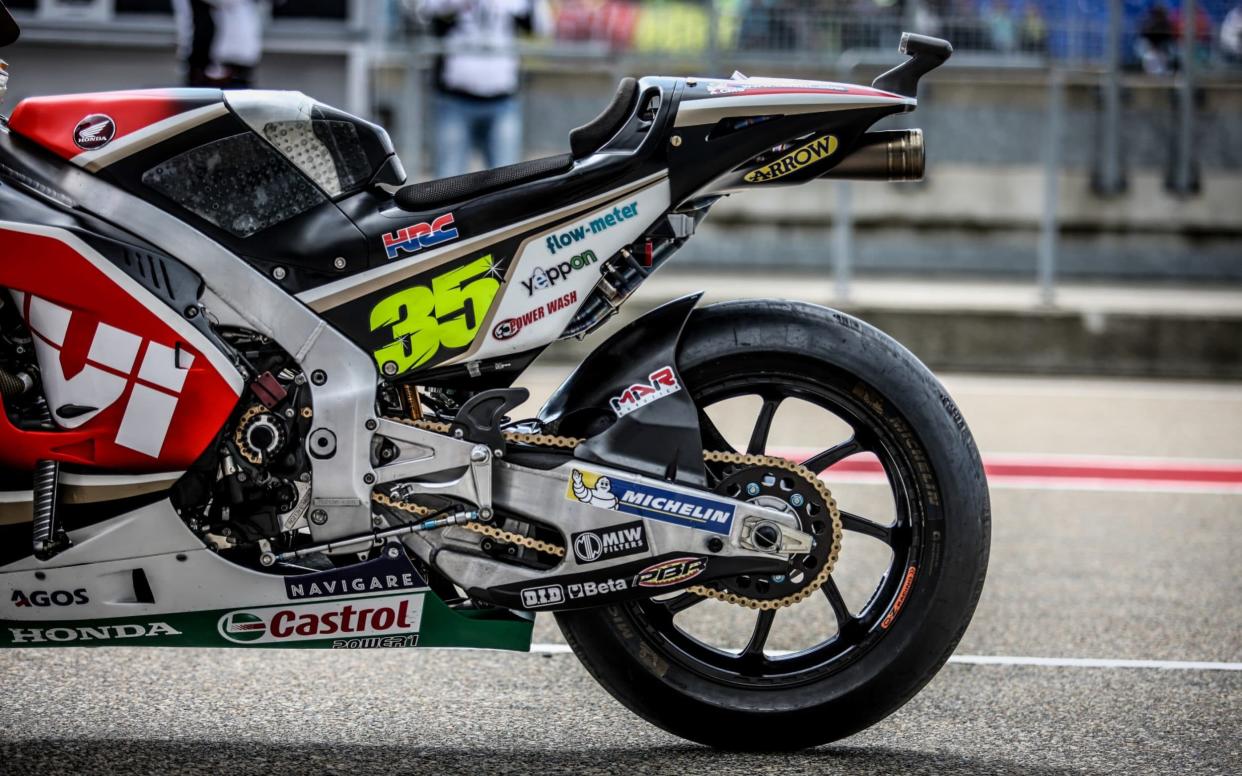
A million euros is the bare minimum to lease a competitive motorcycle in MotoGP, but the piggy bank will need to be far plumper to successfully negotiate eighteen rounds of the FIM World Championship. Cal Crutchlow’s LCR Honda team are one of the leading satellite squads in the paddock and have the rapid and determined Brit contracted for another two years on the 2016 title-winning RC213V; the 31 year old one of three riders on factory-spec equipment from HRC.
MotoGP reawakens from a five-week summer break this weekend with the Monster Energy Grand Prix České republiky at Brno; a circuit where Crutchlow triumphed twelve months ago to end Britain’s three-decade draught of victory in the premier class.
2016 was a momentous term for both the athlete and Lucio Cecchinello’s unit. Crutchlow won two rounds and grabbed another two podium finishes however glory came at a price as he also headed the crash charts with 26 spills in the first season with Michelin tyres.
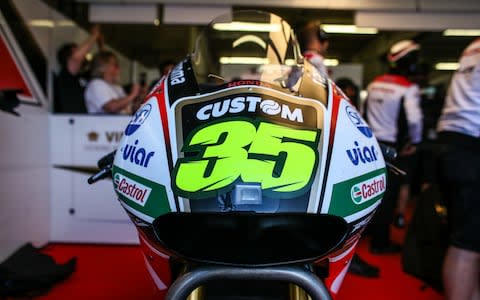
Looking at Crutchlow’s prototype 1000cc RC213V close-up is like admiring a patchwork sculpture of metals, materials and functional thinking. It is compact and imposing but bursting with shades and contours of technology: a clutch of wires here, chiselled carbon there, gleaming bling and special parts prominent. It looks explosive – and howls when alive – but also surprisingly delicate.
“I don't want to say they are custom-made but there is nothing of a ‘standard’ bike about it,” explains Chief Technician Christophe Bourguignon, affectionately called ‘Beefy’ by Crutchlow and crew in the now dormant pit garage at the Circuit de Barcelona-Catalunya. “Every part is expensive!”
“We lease these bikes but in the price you are also paying for the development and the engineers from HR,” the Frenchman explains of the initial outlay of a two-million ‘ballpark’ for a pair of race bikes. “We also use some of their tools and software. We have HRC staff with us every race and that is all part of the fee. It is an overall package. You could say ‘wow, that's a lot of money’ but there is a lot involved around it with the human resources.”
When things go wrong Crutchlow can often be spotted running trackside to grab a lift back to the pits while the Honda is retrieved from the gravel, sometimes in bits. Moments like this lead Beefy to call his staff into efficient action while exuberant team owner Cecchinello starts sweating.
“A crash can be between €15,000 and €100,000,” Christophe estimates. “A €2,000 crash does not exist in MotoGP. If we are lucky then we just have to change a few parts and we raid our stock in the race truck. A big one – or a few big ones in a row – can suddenly put you in trouble because we don't have five spare fuel tanks, for example.
“It is the same for exhausts and radiators; we have practice and race versions. You can have one or two big crashes in a weekend but then you get closer to having a problem. If I order parts from HRC then you have to factor the time from building to delivery and it can be five or six weeks.”
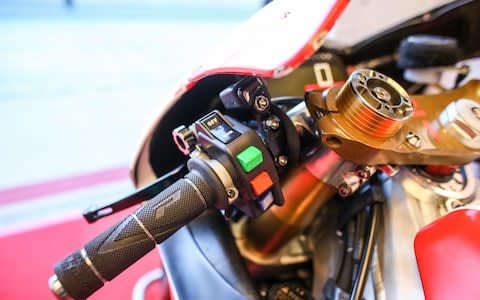
“The bikes are heavy and they go quickly and there isn’t really such a thing as a ‘small’ crash,” he reasons. “If you lose the front end then you still end up with broken or damaged fairings, side panels, handlebars and many parts are carbon fibre.
“Most of the things can be repaired and then it fixed back and repainted. It gets expensive when you have a big tumble like we had in Qatar this year when you bend the chassis and the swingarm; there is no price for that. It is down to each manufacturer.”
Bourguignon walks around the bike and begins to point. “A set of carbon brakes is about 10,000 euros and most of the time when the bike ends up in the gravel there are stone chips on the disc and it is too dangerous to re-use those if they are damaged. You don't want to be sending your rider out at 300kmph with something that can explode because carbon fibre is quite critical.”
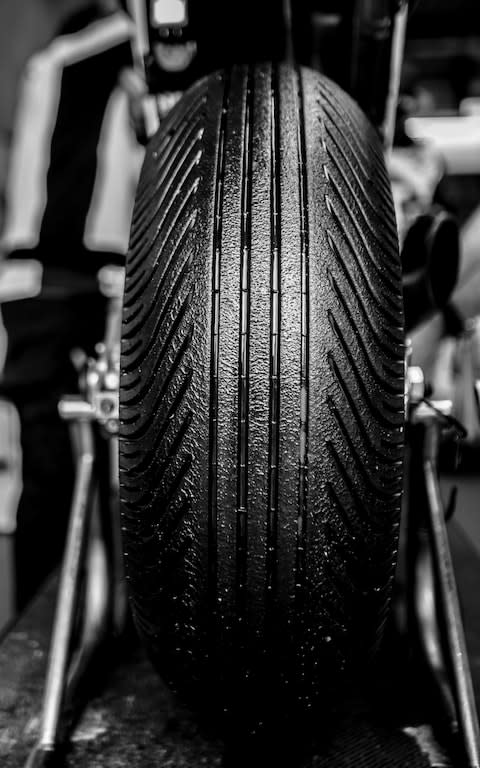
“We run magnesium wheels and a set costs around €4,000,” he continues. “The Michelins are a little smaller than the Bridgestones and in the event of a crash the rim is not as protected as it used to be. Even if we clip a curb then both wheels will be damaged and, like the brakes, it is something where you don't want to take a risk. After most big crashes we change the wheels.”
“As soon as the bike hits the ground then things like footrests, levers and handlebars go in the [scrap] drawer,” he laments. “On these bikes you can see that the radiator is quite big and in most crashes – although not all the time – this gets bent. This part, depending on the spec and manufacturer, can be anything up to €10,000. We have some tiny sliders on the side of the bike to try and protect this and other parts, like the tiny electric components, if the bike is sliding off somewhere on its side.”
He looks around the small pit garage of chests and cabinets. “Generally we have to go through many parts. If the bike hits the floor on the left side then we have to change the shifter, the footrest plate, the shift sensor, the tow tube, the battery cover and the electrics. On the right side if you bend the footplate in a certain place then you break the pin of the rear brake master cylinder, exhaust, exhaust protector and sometimes skim the top of the clutch. You might also have a broken pin and the top and bottom triple clamp.”

Bourguignon, working his way through a mental list by now, then gestures to the front of the Honda. “Electrics: you can see the switches and the temperature and pressure sensors and the 2D dashboard, which alone is around €2,500. A main harness can be between €10,000 and €15,000 and then all the sensors: the bike is full of sensors. There is not a single electronic part cheaper than €1,000.”
“The fuel tank can be easily damaged. With a little dent we can adjust it but we need to be really precise because we’re restricted by the capacity [22l] and most of the time a crashed fuel tank will not be re-used… maybe just for practice or a winter test but never for a race.”
A stark piece of robustness on the motorcycle is the gleaming and machined swingarm, holding a meaty rear wheel and slick tyre in place; the main contact point for the 260-odd horsepower that drives these machines to more than 220mph on tracks like Mugello and Spielberg.

‘A swingarm is quite weak actually,” Bourguignon says. “It looks like a beast and is stiff but it’s not that strong and it can be beaten-up quite quickly. The seat also; it is made of carbon and a bang will break the bracket and the mounting. They could be a lot stronger but then it comes down to weight.”
So what is the most resistant piece? “A strong thing? The brake calliper! That’s something we rarely change, and I have to say the engine as well. I am touching wood because we are limited on the amount of engines we can use but I don't have too many memories of damaging the engine in a crash. It is quite well protected. Even after a big one like in Qatar the engine will be OK but 90% of the bike we’ll have to change.”
The protruding elements of the Honda are the ones most exposed to damage and it’s Bourguignon’s job to oversee that several ‘virtual’ bikes are stored, ready for quick assembly. “As well as big things like wire looms, tanks, radiators, you need more than ten sets of footrests and plates because sometimes there are two-three races or in a row and you have to have stock,” he comments.

“You try to have two bikes plus three or four ‘spare’. Lucky for us we are close with HRC so if you have a big drama and need a spare swingarm they are there to support us until we get our paid parts and we return the material. As the bikes are really close in spec, I would say, then it is easy to do that and they are really nice and supportive in that aspect.”
Rebuilding and remoulding the #35 is a wallet-buster but there are also the running costs of a lump of cutting-edge technology that is designed to find extremes of speed and physics and to trial ideas that might eventually find their way onto production road motorcycles. The budget for this facet of the race operation is actually a bit surprising.
“Maintenance is really low to be honest,” Bourguignon says. “There is a lot of work to do for the mechanics because they strip, they clean and supervise every single part to make sure there is no damage, no cracks, no wear. For general maintenance you are talking about clutch plates, oil, oil filter, fuel filter, brake pads…but there is no majorly expensive parts without a crash. Each part of the bike has a set mileage whether it is a sensor or a front wheel axle nut. You have to change parts almost like a kit because they all have the same mileage. However I’m sure they will work forever because they are made by Honda but because they vibrate and get knocked around then Honda decide what will be a safe mileage.
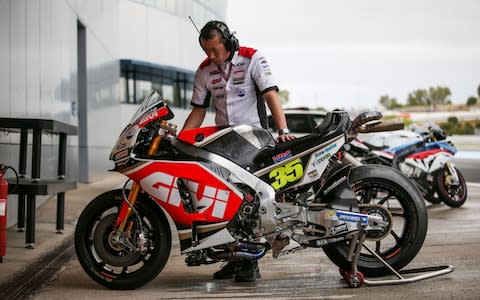
“With the investment we make in racing you cannot [afford to] end a race because a sensor fails…and there are many on the bike that are very important when it comes to things like traction control, wheelie, torque delivery and engine management. If one does let go, then often you will have a back-up but you still need to be on top of it.”
Bourguignon is not alone in the pitbox on Saturday evening in Catalunya. Members of the team are still labouring to ensure all is prepared for the Grand Prix race. The same technicians are skilled custodians of the RC213V in whatever state the bike comes back to the garage.
“The mechanics make it look easy, they are working on this bike every day; it would be like us having a coffee!” Bourguignon smiles. “They know everything inside out. The Honda is well known for being simple to work on. I have heard that some other European race bikes are very difficult in that regard. We can change an engine in one hour and a half easily: if you say that to the guy in your bike shop he will look at you like you’re crazy but we can change an engine and chassis in about an hour fifteen-twenty. After all, the guys work on the bike morning until night, from January to the end of the season.”
Crutchlow will scrape kneepads and curb stones this weekend at the popular Brno layout and steer one of the fastest motorcycles in the world to the limits of physics. The vastness of the effort and resources placed into those two wheels and the will to achieve times and results is part of the enormous ‘cost’ of being out on that track.

